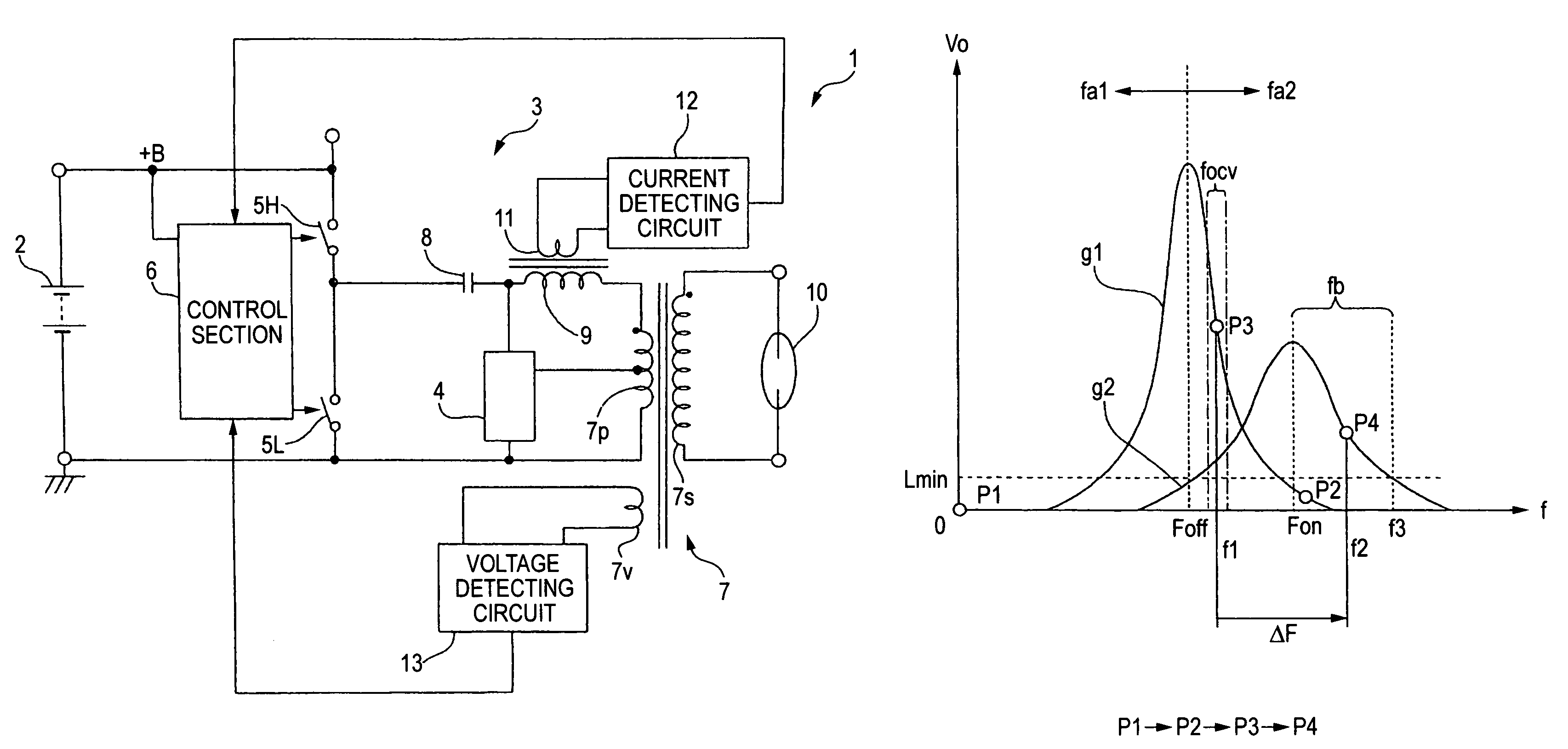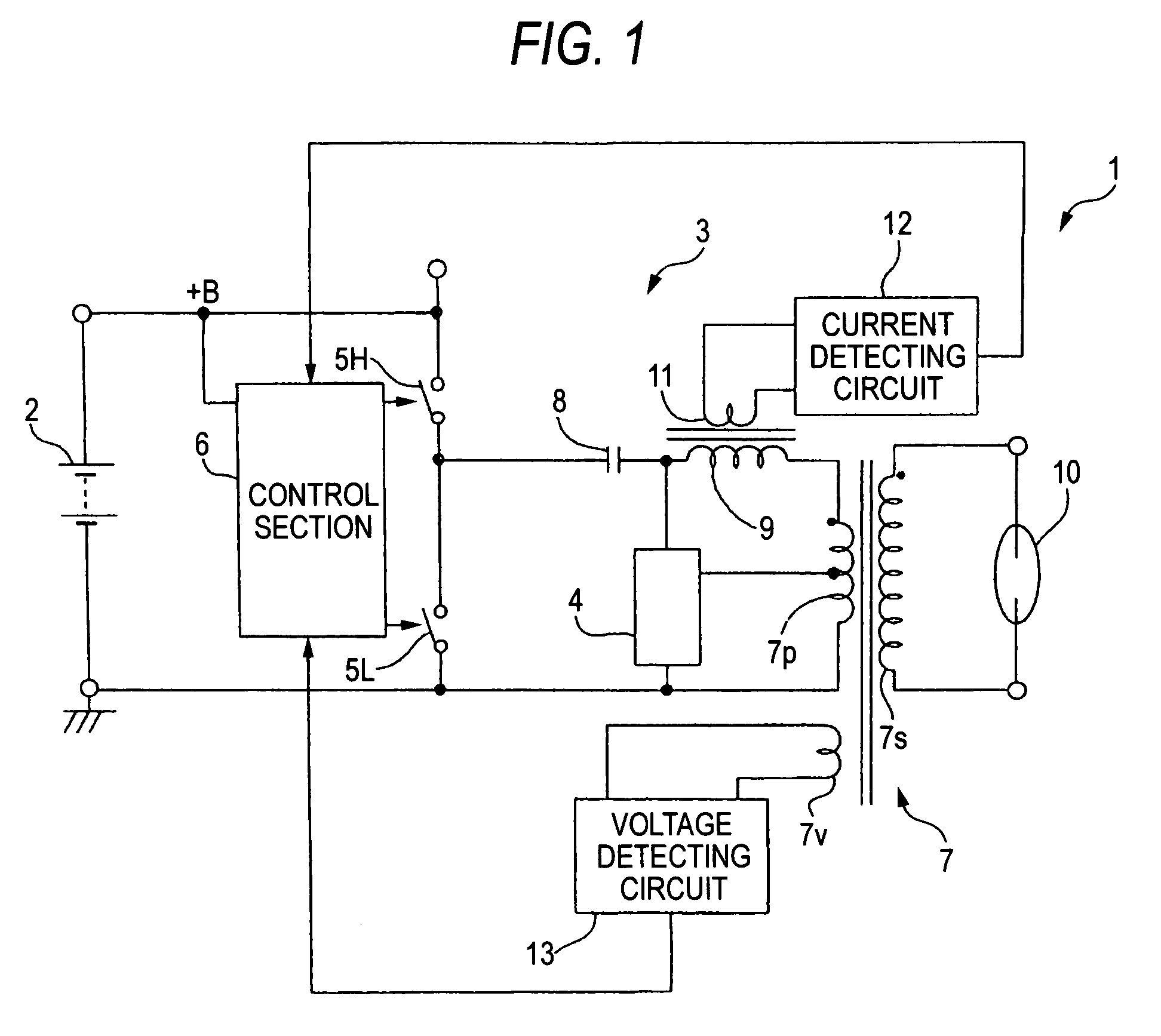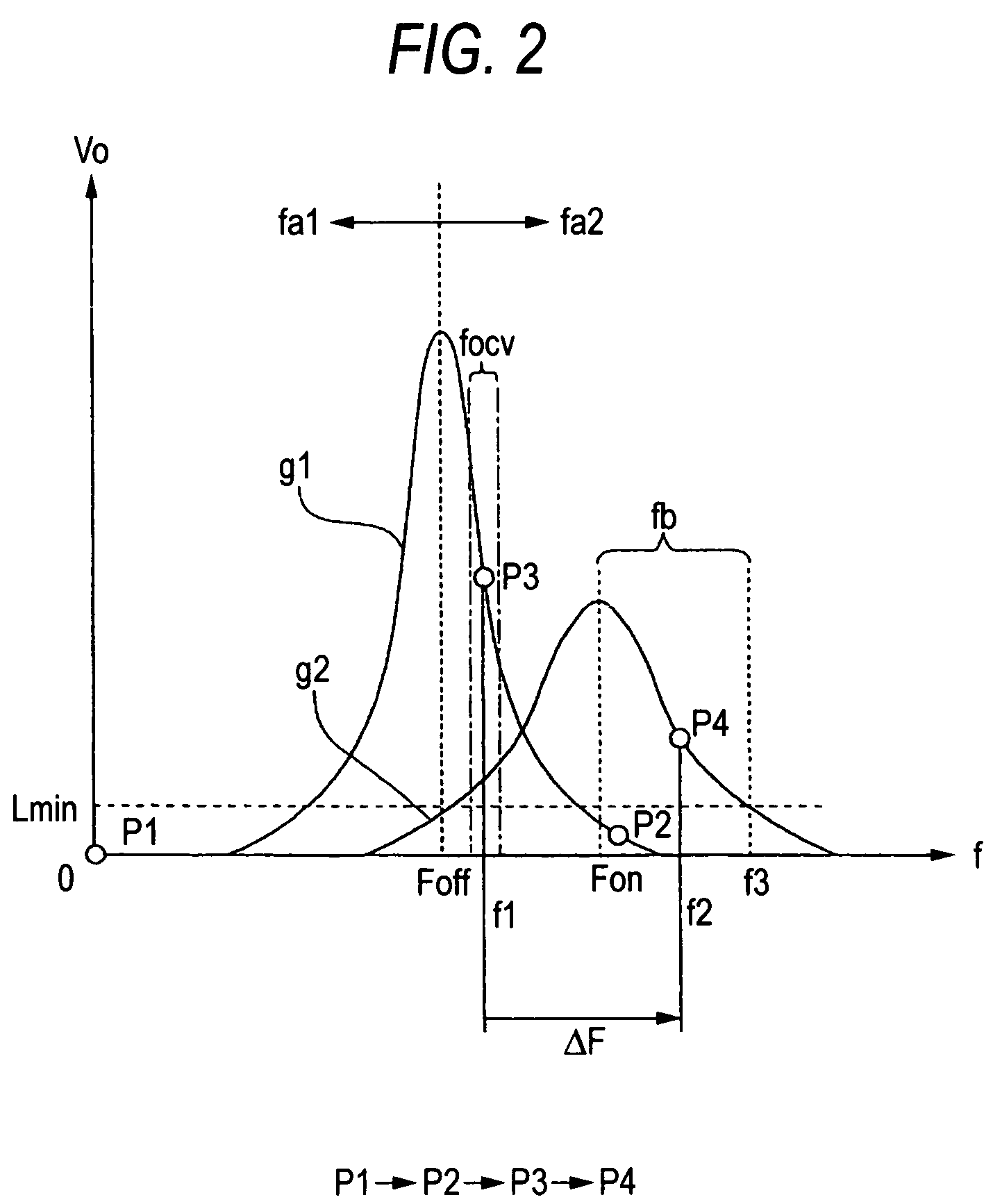Discharge lamp lighting circuit
a technology of discharge lamp and circuit, which is applied in the direction of light sources, process and machine control, instruments, etc., can solve the problems of increasing circuit scale and system cost, compromising compact design, and affecting the stability of lighting or blackout, so as to reduce the probability of unstable lighting or blackout, reduce the cost of circuit devices, and reduce the effect of tim
- Summary
- Abstract
- Description
- Claims
- Application Information
AI Technical Summary
Benefits of technology
Problems solved by technology
Method used
Image
Examples
Embodiment Construction
[0034]FIG. 1 shows a basic configuration example according to an embodiment of the invention. A discharge lamp lighting circuit 1 comprises a DC-to-AC converter circuit 3 and a starting circuit 4 to which power is supplied from a DC power supply circuit 2.
[0035]The DC-to-AC converter circuit 3 is provided to receive an input DC voltage (see “+B” in FIG. 3) from the DC power supply circuit 2 and convert the DC voltage to an AC voltage and boosting the resulting voltage. In this example, two switching elements 5H, 5L and a control section 6 for making drive control of the switching elements are provided. One end of the higher-stage switching element 5H is connected to the power supply terminal while the other end of the switching element is grounded via a lower-stage switching element 5L so that the elements 5H, 5L are alternatively turned on / off. While the elements 5H, 5L are shown by a switch signs for clarity in FIG. 1, a semiconductor switch such as a field-effect transistor (FET)...
PUM
 Login to View More
Login to View More Abstract
Description
Claims
Application Information
 Login to View More
Login to View More - R&D
- Intellectual Property
- Life Sciences
- Materials
- Tech Scout
- Unparalleled Data Quality
- Higher Quality Content
- 60% Fewer Hallucinations
Browse by: Latest US Patents, China's latest patents, Technical Efficacy Thesaurus, Application Domain, Technology Topic, Popular Technical Reports.
© 2025 PatSnap. All rights reserved.Legal|Privacy policy|Modern Slavery Act Transparency Statement|Sitemap|About US| Contact US: help@patsnap.com



